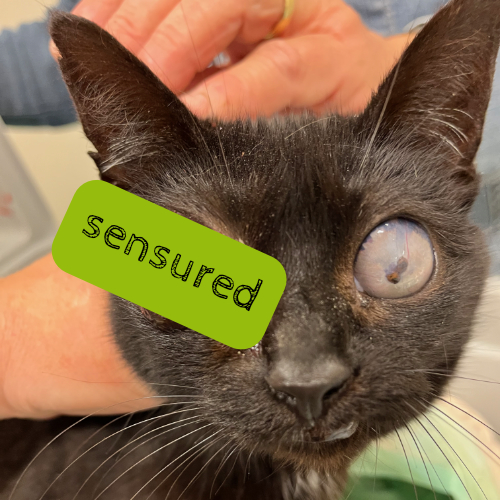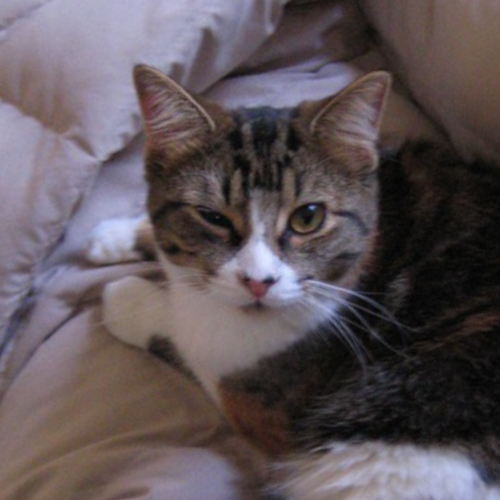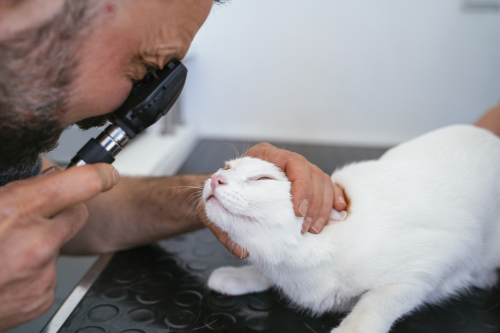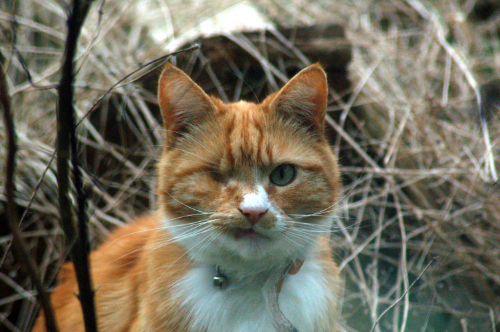Introduction
Cats are known for their sharp eyesight, which helps them in hunting, playing, and exploring their surroundings. However, sometimes a cat develops an enlarged eye, which can be a serious problem. In this article, we discuss the causes, symptoms, diagnosis, and treatment options for enlarged eyes in cats.
Is there really a big eye in the cat?
When an owner says that their cat’s eye is enlarged, it is most of the time not correct. It is actually the other eye that is slightly squinted, causing a visible difference in the size of both eyes. That is usually the cause in most cases. However, very occasionally a cat actually has an enlarged eye.


Causes of a big eye in a cat
There are several possible causes of an actual big eye in a cat, including:
- Glaucoma (increased eye pressure): This condition occurs when the pressure of the fluid in the eye becomes too high. A big eye in a cat occurs because the eye is essentially inflated like a balloon. If left untreated, this can lead to permanent blindness due to damage to the retina and all other structures in the eye. It is very painful for a cat.
- Inflammation: Inflammation of the iris, known as uveitis, can cause the eye to appear larger than normal, especially because the pupil takes on a different shape. Inflammation of the iris can also lead to glaucoma. This condition can be caused by infections, autoimmune diseases, or trauma.
- Tumors: Some types of eye tumors can cause the eye to enlarge. These tumors can be benign or malignant and may need to be surgically removed.
- Accidents: Injury to the eye or surrounding area can cause swelling and enlargement of the eye. In some cases, the eye may even protrude from the eye socket, making it appear enlarged to an owner. Even for a veterinarian, the difference can sometimes be difficult to see.
Symptoms when there is an enlarged eye
In addition to an enlarged eye in a cat, other symptoms may occur, such as:
- Eye pain or discomfort.
- Redness or irritation of the eye, especially the sclera.
- Cloudiness or opaqueness of the cornea. This normally is transparent.
- Blindness or changes in the cat’s vision.
- Discharge from the eye, such as excessive tears or pus.

Diagnosis
If you suspect that your cat has an enlarged eye, it is important to visit a veterinarian as soon as possible. Your veterinarian will perform a thorough physical examination, including an eye exam and blood pressure measurement. He or she will then likely recommend additional tests, such as:
- Measurement of internal eye pressure: This test helps diagnose glaucoma and involves measuring the pressure inside the eye. This is a painless examination for most cats. They usually also receive a drop in the eye with an anesthetic so they don’t feel it. However, not every veterinarian can perform this test due to lack of an eye pressure meter.
- Ultrasound can be used to evaluate the eye and surrounding structures for tumors or other abnormalities.
- Sometimes a CT-scan will be advised to see what is wrong with the eye.
In many cases, a cat is referred to a veterinary ophthalmologist who will examin the cause of the big eye in the cat. An ophthalmologist has all the equipment and knowledge to provide the best treatment.
Treatment of a big eye in a cat:
The treatment of a big eye in a cat depends on the underlying cause. Some common treatment options are:
- Medication: Depending on the cause, your veterinarian may prescribe medication to reduce inflammation, pain, and other symptoms. For example, if your cat has glaucoma, your veterinarian prescribes eye drops to reduce the pressure in the eye.
- Surgery: In some cases, surgery may be necessary to remove a tumor or reduce eye pressure. Your veterinarian can advise you on the best options for your cat. In many cases, due to the cost, it may also be decided to surgically remove the eye. This sounds very scary, but most cats are acting normal in a few days because they had eye pain for a long time and are now relieved of it. Most owners say that he probably had pain long before the actual problem became visible.
- Supportive care: If your cat is experiencing discomfort or pain, it is necessary to provide supportive care measures, such as painkillers or pain-relieving eye drops. It is also important to support your cat’s overall health with a balanced, high-quality diet and regular veterinarian check-ups.

Keeping eye health optimal
Not all cases of a big eye in a cat can be prevented. However, there are some steps you can take to reduce the risk of eye problems in your cat. Make sure to keep a close eye on your cat daily. Does he tend to squint his eye? This can already be the first indication of pain in his eye. This is generally the first sign that the eye is changing. Of course, this is not always a serious problem. But with glaucoma, pain is the first sign. At that moment, keep a close eye on your cat and his eyes. Does it get worse? Then visit your veterinarian and have it checked. A normal eye problem is usually resolved on its own after a few days. Is it persisting for longer than a week? Then visit the veterinarian. Better to be safe than sorry.
Conclusion
A big eye in a cat can be caused by various factors, including glaucoma, inflammation, tumors, and trauma. Symptoms may include eye pain, redness, cloudiness, and changes in vision. If you suspect that your cat has an enlarged eye, seek a veterinarian’s help as soon as possible to receive a proper diagnosis and treatment and prevent deterioration. Treatment options may include medication, surgery, and supportive care.
Hopefully your cat can keep his eye and have a painless life.
